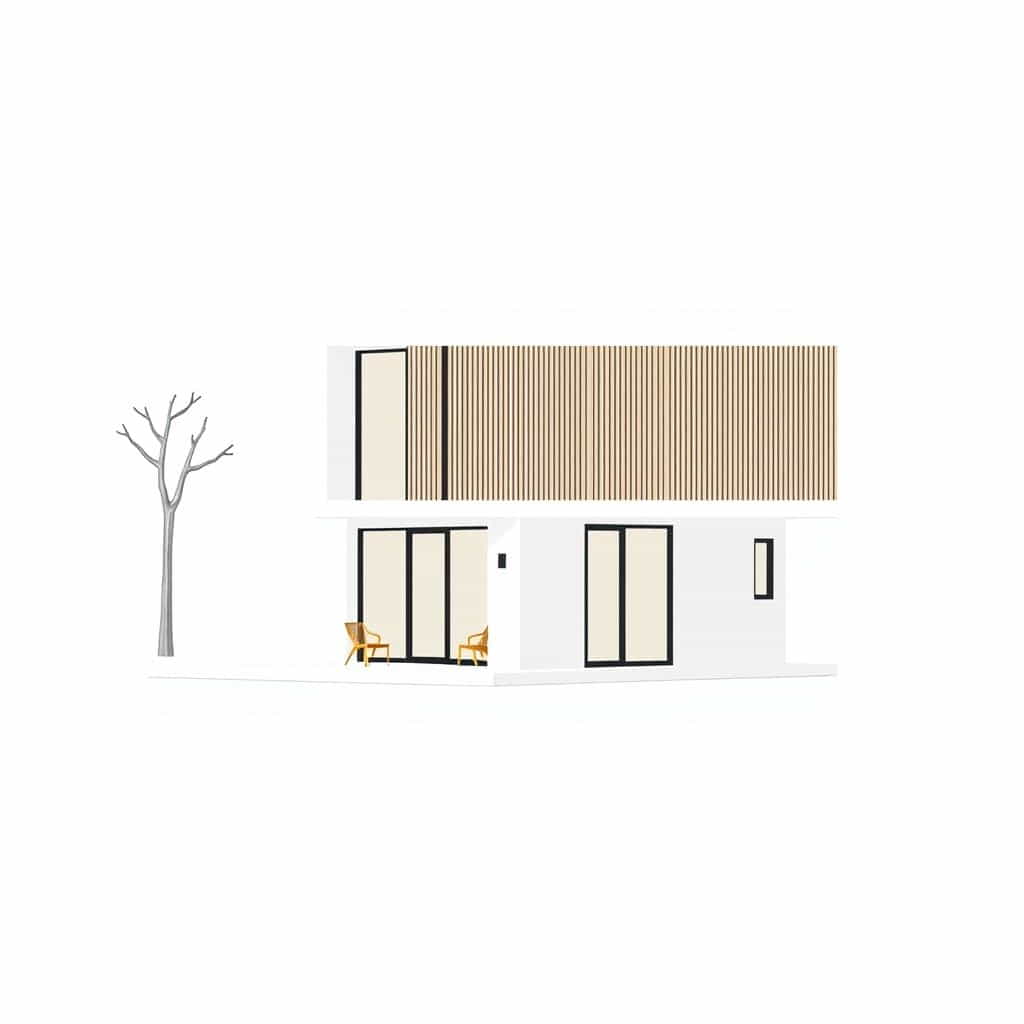A north-facing house is a home where the main entrance or front of the house faces north. The orientation of a house plays a crucial role in factors such as sunlight exposure, energy efficiency, and comfort. In different cultures and climates, a north-facing house can be highly desirable or less preferred, depending on its advantages and drawbacks.
This topic explores the meaning, benefits, disadvantages, and key considerations when choosing or designing a north-facing house.
Understanding a North-Facing House
A north-facing house means that when you stand at the main entrance and look straight ahead, you are facing north. This orientation affects the amount of natural light a house receives throughout the day.
In the Northern Hemisphere (e.g., the U.S., Canada, and Europe), a north-facing house receives less direct sunlight because the sun moves from east to west via the south. However, in the Southern Hemisphere (e.g., Australia and South Africa), north-facing houses receive maximum sunlight exposure, making them highly desirable.
Benefits of a North-Facing House
1. Cooler Indoor Temperatures (Northern Hemisphere)
Since north-facing houses receive less direct sunlight, they tend to stay cooler in summer, reducing air conditioning costs.
2. Even Natural Light Distribution
In many climates, a north-facing house receives soft, indirect light throughout the day. This prevents glare and excessive heat, making interiors more comfortable.
3. Ideal for Workspaces and Studios
For artists, photographers, or home offices, north-facing rooms provide consistent lighting without harsh shadows, making them perfect for workspaces, painting, or photography.
4. Energy Efficiency in Warmer Climates
In hot regions, north-facing homes require less cooling, reducing energy bills and environmental impact.
5. Feng Shui and Vastu Shastra Preferences
In Feng Shui, a north-facing house is considered auspicious for career growth and financial stability. Similarly, in Vastu Shastra (Indian architectural philosophy), it is seen as beneficial for business and prosperity when designed correctly.
Drawbacks of a North-Facing House
1. Less Natural Warmth in Cold Climates
In cold regions, a north-facing house receives less sunlight, making it colder in winter and increasing heating costs.
2. Limited Sunlight in Gardens and Living Spaces
If you enjoy sun-filled rooms or a warm backyard, a north-facing house may not be ideal, as outdoor spaces might remain shaded for most of the day.
3. Potential Moisture Issues
Since north-facing walls receive less sunlight, they can stay damp longer, leading to potential mold and mildew problems if not properly ventilated.
How to Optimize a North-Facing House
1. Maximize Natural Light with Large Windows
Adding large windows, skylights, and glass doors on the east and west sides can bring in more natural light.
2. Choose Light Colors for Interiors
Using white or light-colored walls helps reflect light and make rooms feel brighter and more spacious.
3. Use Artificial Lighting Strategically
Installing warm LED lights and indirect lighting can create a cozy atmosphere in spaces that lack sunlight.
4. Design Outdoor Spaces Wisely
Placing patios or gardens on the east or west side ensures better sunlight exposure for plants and outdoor seating areas.
5. Improve Insulation for Energy Efficiency
In cold regions, adding better insulation and double-glazed windows can help retain heat in a north-facing home.
Is a North-Facing House Right for You?
The suitability of a north-facing house depends on your location, climate, and lifestyle preferences.
-
If you live in a hot region, a north-facing house is energy-efficient and cooler in summer.
-
If you are in a cold climate, consider adding insulation and extra heating solutions.
-
If you need consistent natural light, a north-facing home is ideal for offices, studios, and workspaces.
-
If you love sunny rooms and warm outdoor areas, a south-facing house may be a better option.
A north-facing house has several advantages, especially in warmer climates where it helps keep interiors cool and comfortable. However, in colder regions, it may require extra heating solutions to maintain warmth.
By understanding the benefits, drawbacks, and optimization strategies, you can make an informed decision about whether a north-facing house is the right choice for your home and lifestyle.
